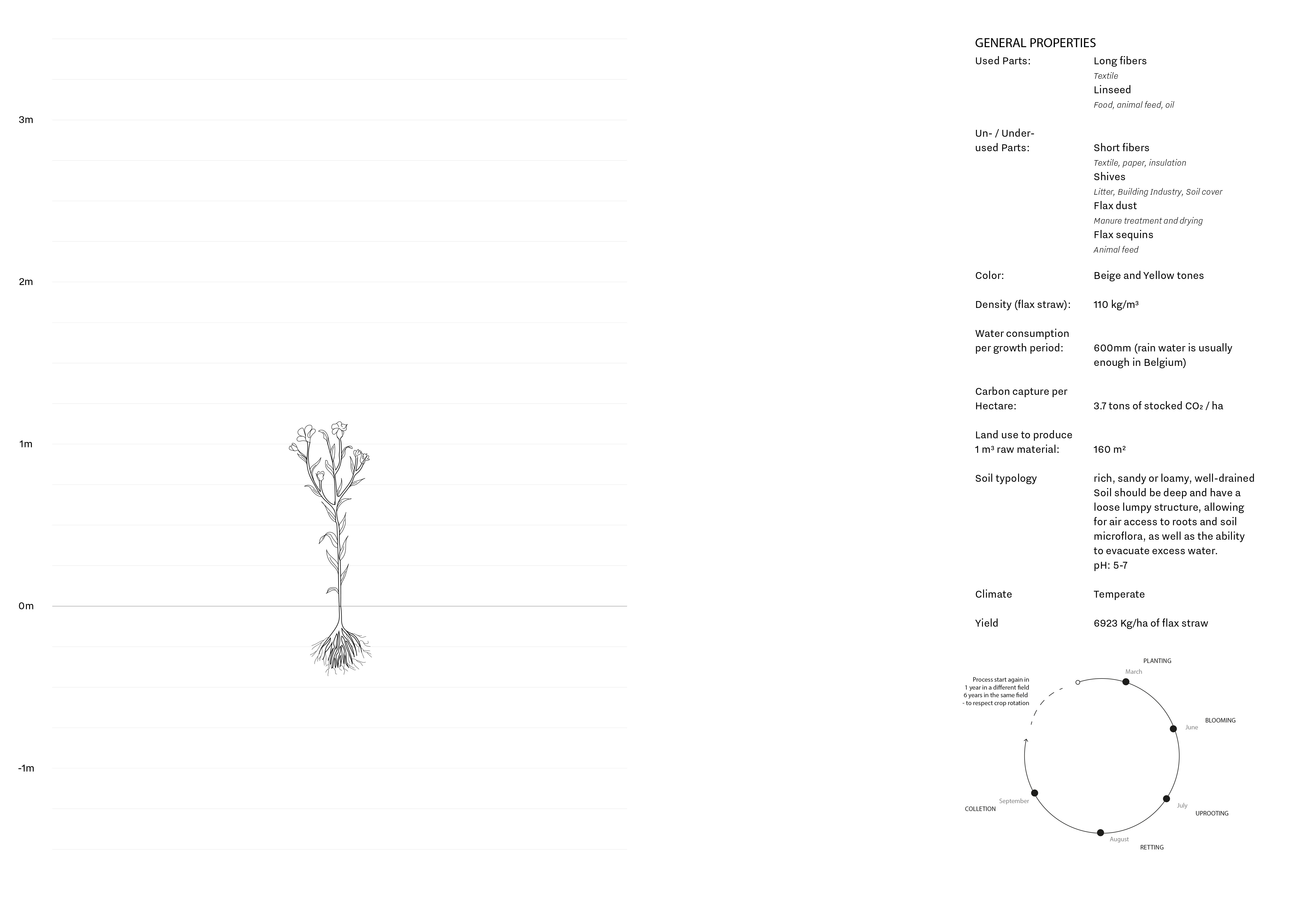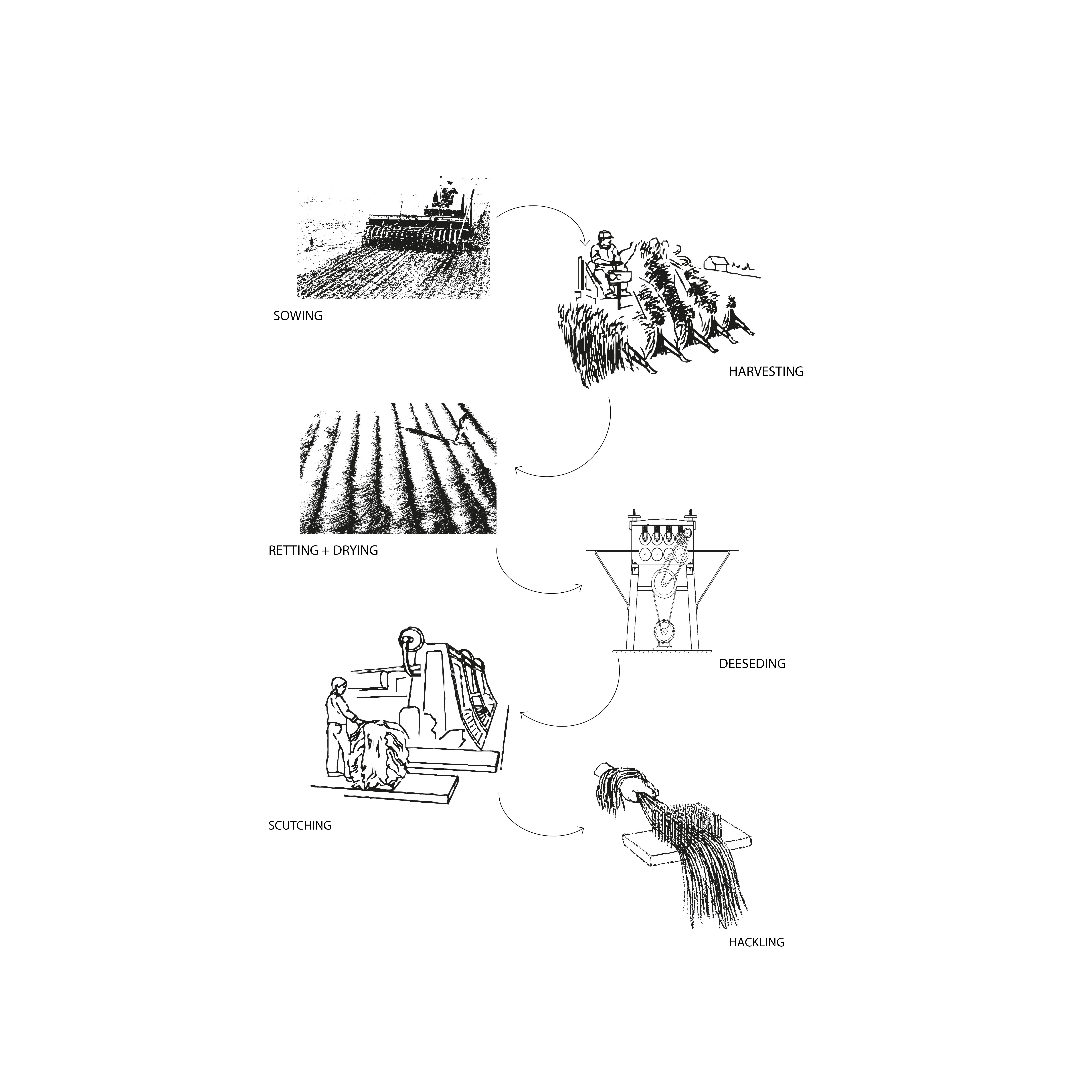Flax
Flax is generally cultivated both for its fibers - from which yarn and textiles are made – and its seed – from which the flaxseed oil is produced. The application of flax in architecture is quite recent. It’s used (in the shape of flax tow and flax shives) mainly for thermal and acoustical insulation panels and (in the shape of long fibers/yarn) some experiments have been done for structural parts of pavilions; some laboratory research have been done also for a flax-crete composite. Flax is a local production in Belgium, which is the main country in Europe growing flax together with France and the Netherlands. Of the 81 300ha of flax grown in Europe, 10 000 to 15 000 are grown in Belgium, 2/3 of them in Wallonia. The crops are in the south, and the technique is in the north of the country. Back in the mid-19th century flax industry was the most important economic activity in Belgium and, after a crisis around 1960, the demand for the market started to increase again. Flax has some advantage that make it a good plant to be consider for sustainable architecture applications.




